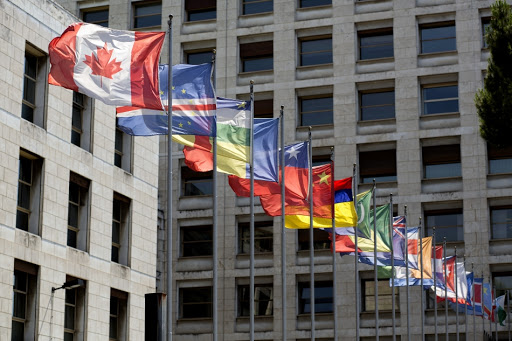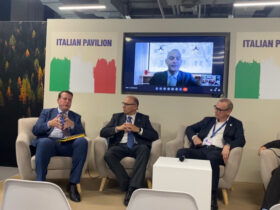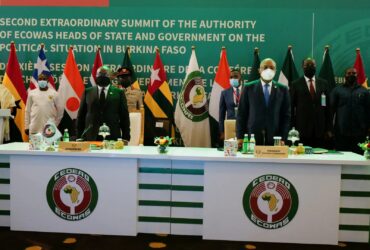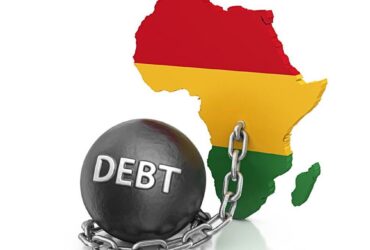In a significant move towards promoting sustainable agriculture and addressing the impacts of climate change, the United States Department of State has announced an additional $10 million in funding for soil fertility mapping projects in Ghana and Kenya. This initiative, spearheaded by the Food and Agriculture Organization of the United Nations (FAO), aims to bolster climate-smart agriculture, enhance adaptation measures, promote resilient crops, and improve fertilizer use efficiency and soil health.
FAO’s Enthusiastic Welcome
The FAO has warmly welcomed the generous contribution from the United States, emphasizing its potential to bring substantial benefits to smallholder farmers and their communities in Ghana and Kenya. Maria Helena Semedo,

FAO
Rome, Latium, Italy
Deputy Director-General of FAO, highlighted the pivotal role healthy and fertile soils play in building resilience to the multifaceted impacts of climate change and transforming global agrifood systems.
World Soil Day Announcement
The momentous announcement was made by Rodney M. Hunter, U.S. Chargé d’Affaires of the U.S. Mission to the UN Agencies in Rome, during the global celebrations of World Soil Day 2023. Hunter expressed the United States’ excitement about contributing an additional $10 million to the FAO SoilFER soil fertility mapping projects, specifically targeting Ghana and Kenya. He outlined the objectives of the funding, which include strengthening smallholder agricultural production, mapping soil needs, and providing technical assistance to farmers. The ultimate aim is to empower farmers to improve soil fertility through more efficient use of fertilizer and water, thereby supporting climate-smart agricultural practices and enhancing soil health. This aligns with the broader Vision for Adapted Crops and Soils (VACS) Program.
Boosting Progress with FAO’s SoilFER
The additional funding is set to significantly accelerate the progress of FAO’s SoilFER initiative, which is currently focused on Central America and sub-Saharan Africa, specifically in Guatemala, Honduras, and Zambia. The first tranche of funding from the U.S. Government, totaling $20 million, enabled FAO to fast track the impact-oriented project in July 2022.
Addressing the Fertilizer Crisis:
A core objective of the project, funded by the U.S. State Department as part of the VACS Program, is to address the global fertilizer crisis. This crisis, influenced by factors such as costs, availability, and risks related to inefficient usage, necessitates short- to long-term solutions. The overarching goal is to enhance soil fertility and health, as well as resilience to shocks. The project involves a comprehensive range of activities, including field-based soil sampling, rigorous laboratory analysis of soil samples, implementation of digital soil information systems, fertilization field tests and recommendations, sustainable soil management practices, and the integration of modern technology tools. These tools empower small-scale farmers to access advanced soil information and data, enabling informed decision-making.
Detailed Mapping of Soil Nutrients and Properties
Central to the effort is the detailed mapping of soil nutrients and functional soil properties at a granular level through well-designed soil surveys and analyses. The project also focuses on developing techniques to monitor these aspects over time. This comprehensive soil information system serves as a valuable asset to national authorities and can be integrated into decision-support systems that address the judicious use of fertilizers.
Addressing Food Insecurity in Africa:
The infusion of additional funding for soil fertility mapping projects in Ghana and Kenya comes at a critical time, considering the escalating food insecurity on the African continent. In 2022, nearly one in four people in Africa, constituting 24.0 percent of the population, faced severe food insecurity. The prevalence of severe food insecurity exhibited varying degrees across different regions, with increases of 0.8, 1.3, 1.5, and 0.3 percentage points in Northern Africa, Middle Africa, Southern Africa, and Western Africa, respectively.
In Conclusion,
The United States’ commitment to allocating an additional $10 million for FAO’s soil fertility mapping projects in Ghana and Kenya reflects a commendable effort to address pressing global challenges. By supporting initiatives that promote climate-smart agriculture, resilient crops, and efficient fertilizer use, the funding contributes to building agricultural resilience and addressing the impacts of climate change. FAO’s SoilFER project stands as a testament to the collaborative efforts required to transform agrifood systems and ensure sustainable food production for future generations. As the world grapples with complex agricultural and environmental challenges, partnerships and investments of this nature play a crucial role in fostering a more resilient and sustainable future.
Source: Reliefweb












